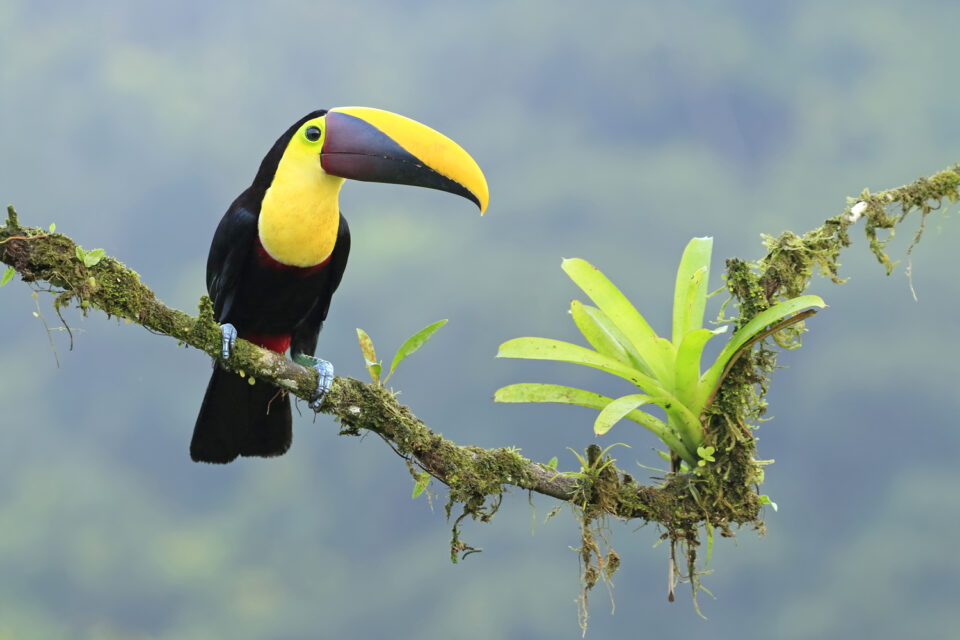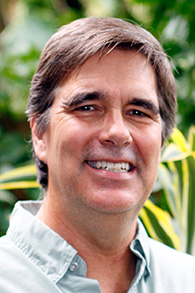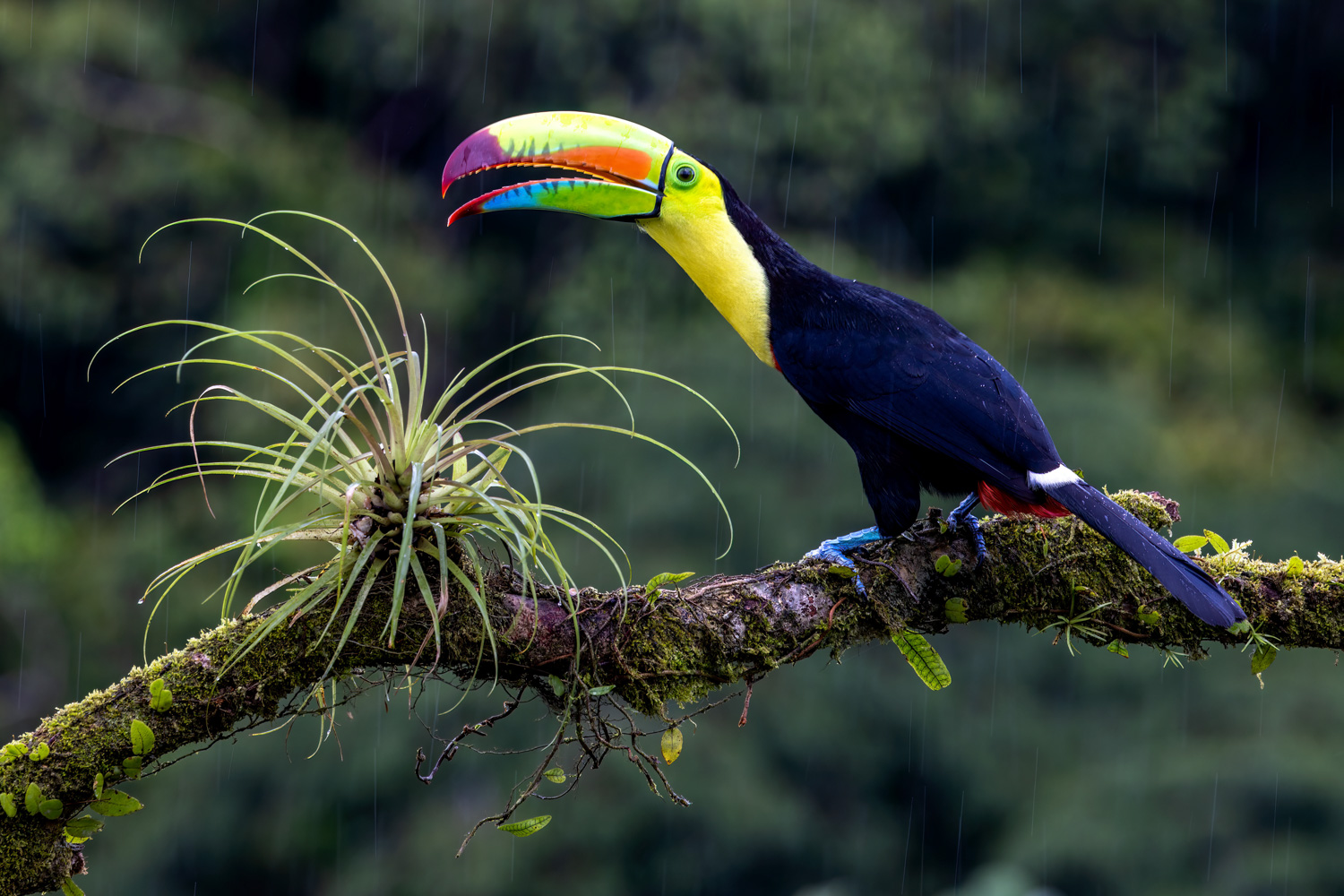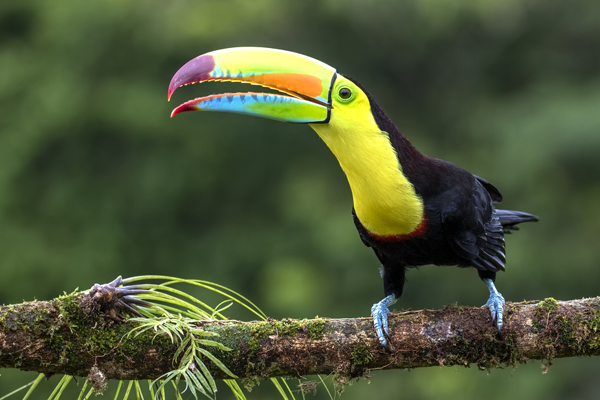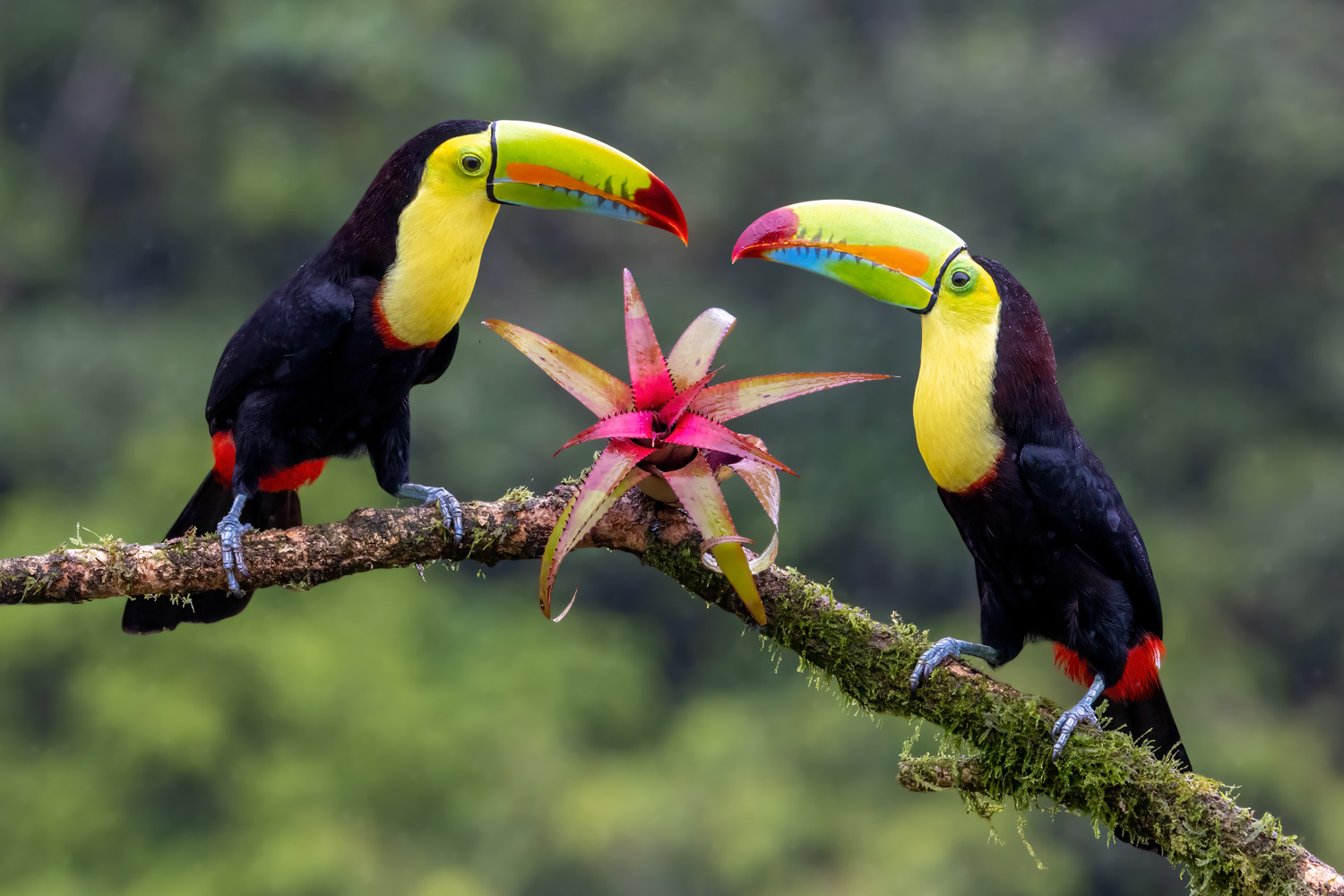When looking at the tiny country of Costa Rica on a map, it’s hard to imagine the biodiversity contained within. Bounded by the Pacific Ocean on the west and the Caribbean Sea on the east, more than 900 species of bird call this country home. The huge biodiversity can be attributed to the rugged and varied terrain. Within an area about the size of West Virginia, the elevation climbs from sea level to above 12,500 feet. This is the result of both volcanic and tectonic activity. Along with altitude changes, Costa Rica also contains several different environmental ecosystems (biomes) such as wetlands, rivers, rain forest, cloud forest and arid plains. With such geological diversity, it becomes easier to see why there is such huge biological diversity as different birds and other animals are adapted and specialized to live within certain zones. It’s no wonder Costa Rica is high on most nature photographers MUST VISIT places. And especially high on mine.
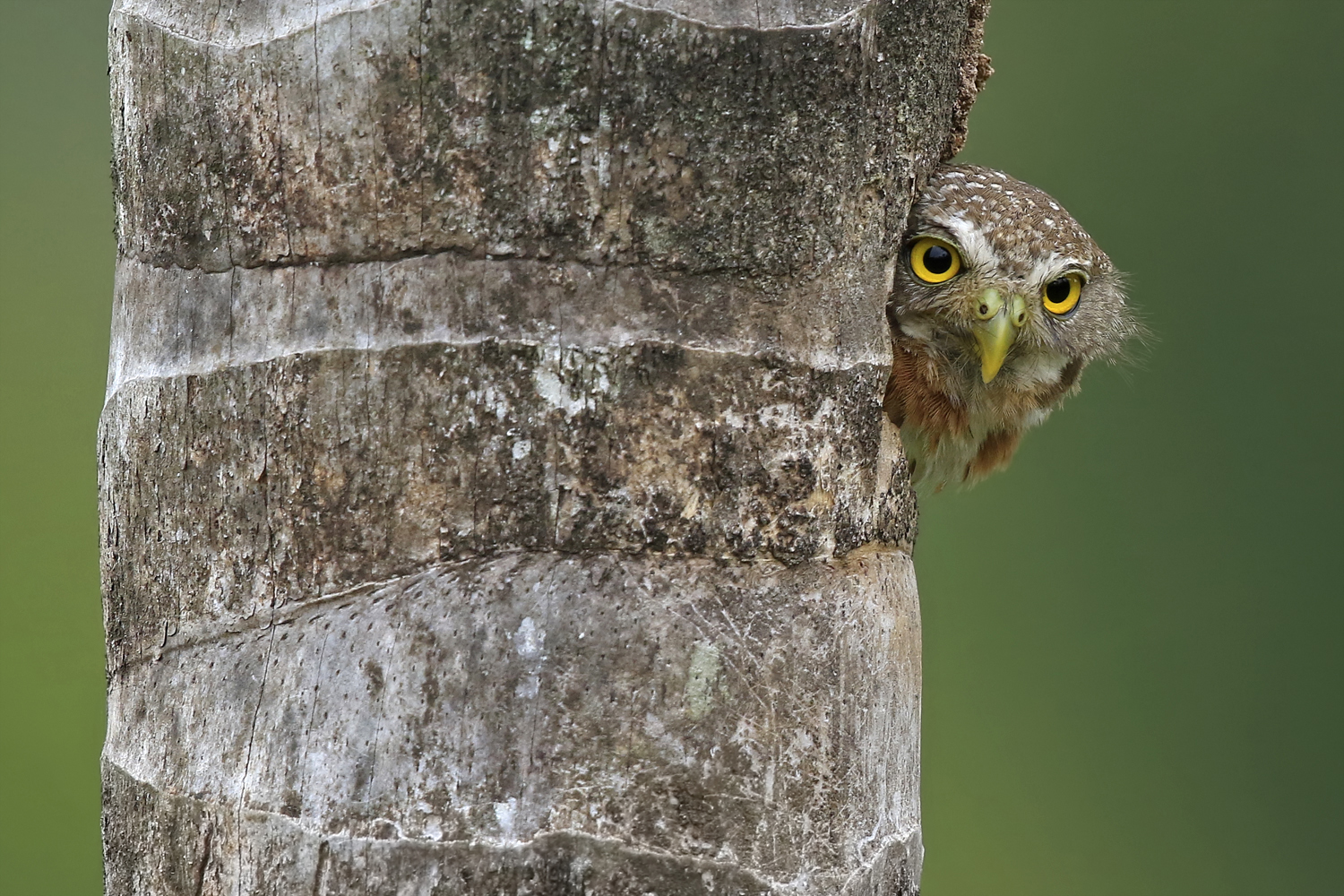
Costa Rica has two main seasons. The wet season, which runs May through November and the ‘Not So Wet’ season from December through April. It would be difficult to characterize this 2nd season as a true dry season because rains are still common during this time. Just a bit less frequent. We plan this tour to coincide with the end of the dry season when birds, especially the resplendent quetzals, are nesting and raising their chicks. It is normal to get some rain during our time in Costa Rica. This year, there seemed to be a bit more than usual. But it didn’t interfere with our shooting. In fact, just the opposite. The rain we got in the lowlands added a very creative element to our bird photography. With the right combination of subject, background, and camera settings, falling rain adds a very dramatic edge to the images. The rains also increase frog activity immensely.
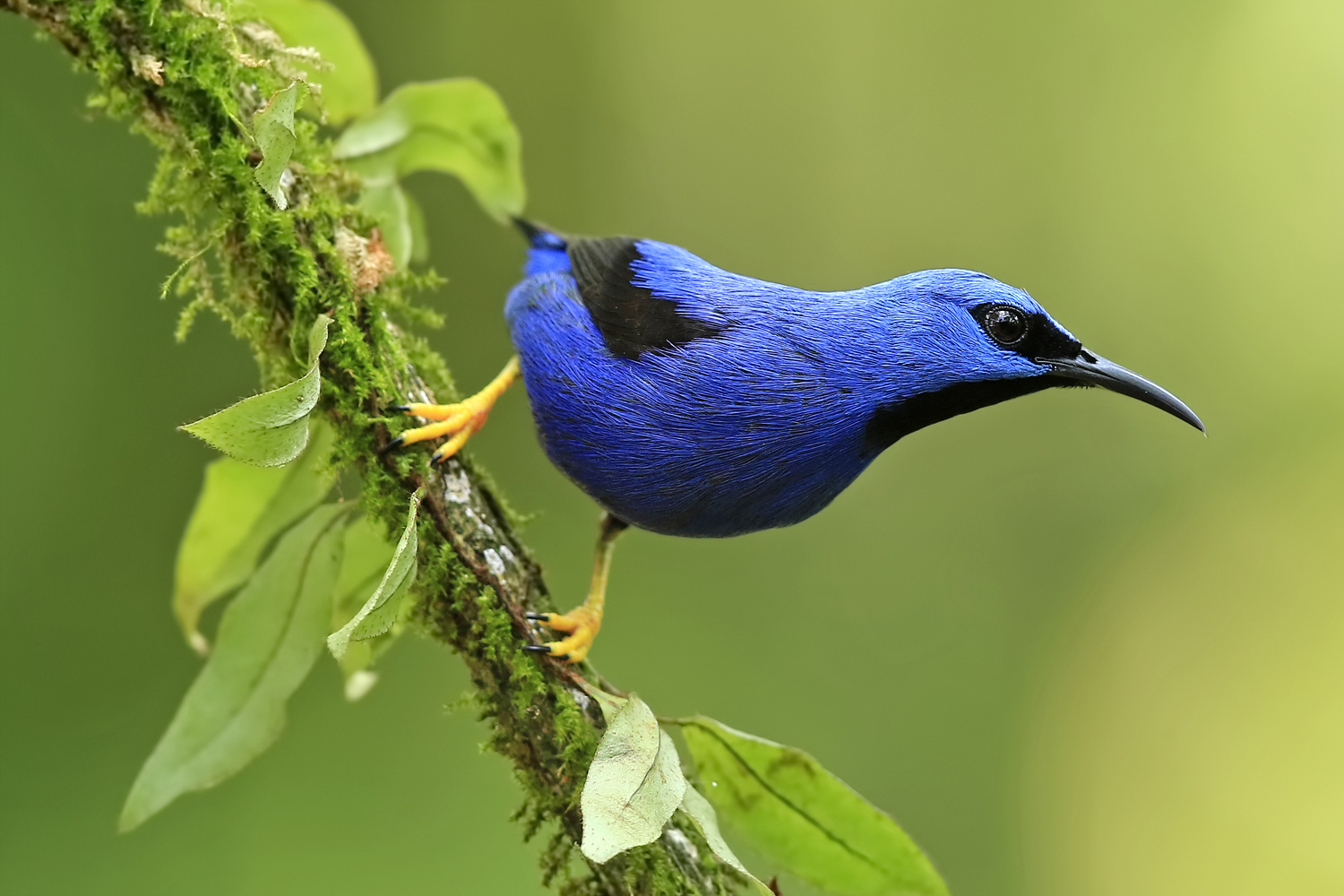
We were able to see and photograph our usual dozens of species this year such as keel-billed toucans, yellow-throated toucans, collared araçaris, Montezuma oropendolas, acorn, black-cheeked and chestnut-colored woodpeckers, king vultures, scarlet and great green macaws, brown-hooded parrots, orange-chinned parakeets, wood rails, several tanager species, and several hummingbird species just to mention a few. Besides the huge variety of birds, we also photographed several different frogs such as strawberry poison dart frogs, green and black poison dart frogs, red-eyed tree frogs and even a ghost glass frogs. A treat this year was being able to photograph three different color variations of the venomous eyelash viper, yellow, green, and orange. The fer-de lance, another very venomous snake, was safely photographed as well. At night, in the foothill forests, the nectar bats put on a show as they came to feed from our flowers. While their numbers were dwindling toward the very end of our second tour this year (no idea why), both groups captured excellent flying bat images from our special high-speed flash bat setups.
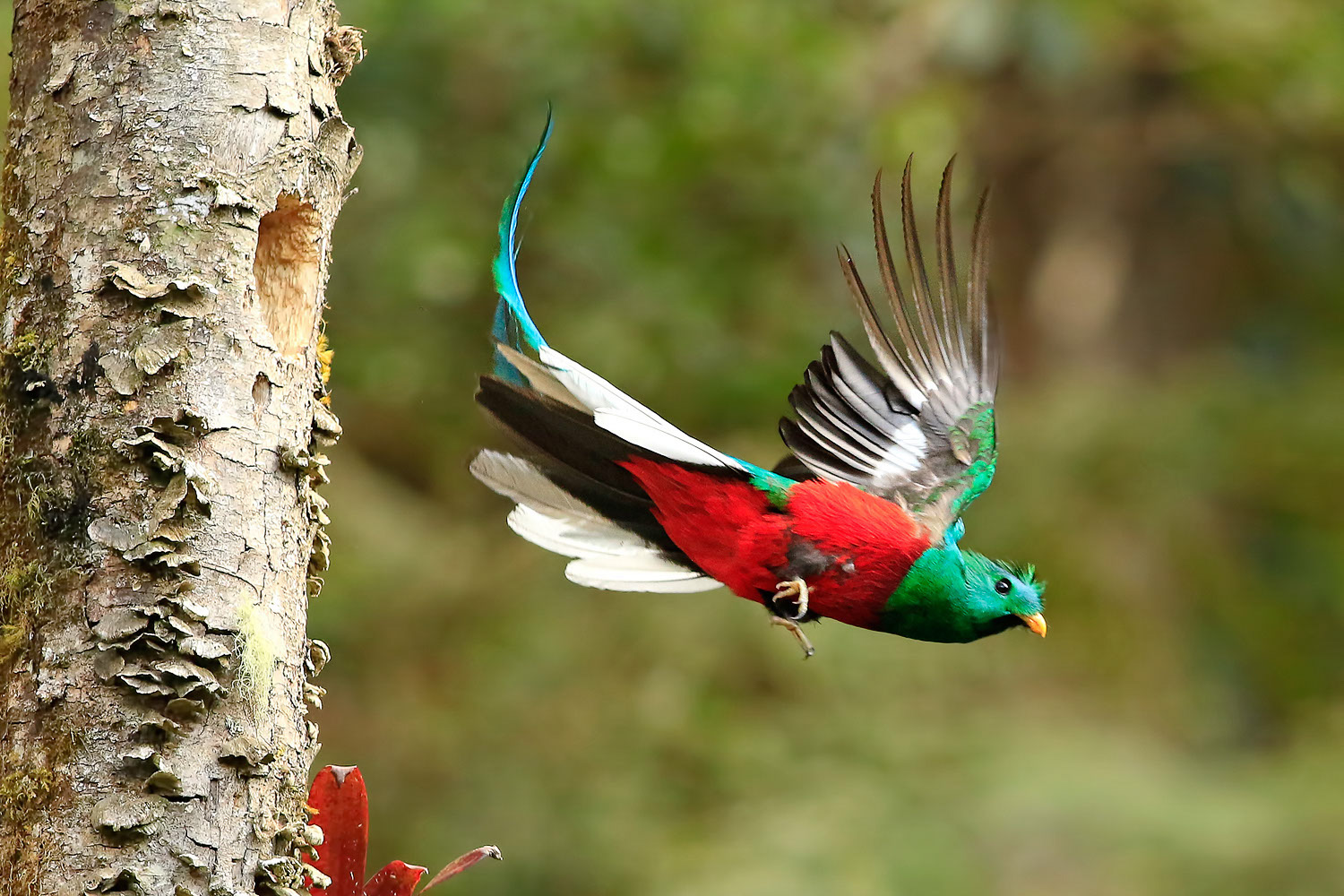
In the highland cloud forests, everyone came away with excellent resplendent quetzal images. The resplendent quetzal is a magnificently colored and endowed bird. The male has 2 brilliant 3-foot-long covert feathers that trail it like a tail. Despite natural problems occurring at 2 nest sites this year, we had one very accessible nest that was extremely reliable with activity. Led by our professional quetzal guides, we were positioned where our presence was completely ignored by the doting parents while they flew in with insects, mini-avocados, and blackberries to feed their growing chicks.
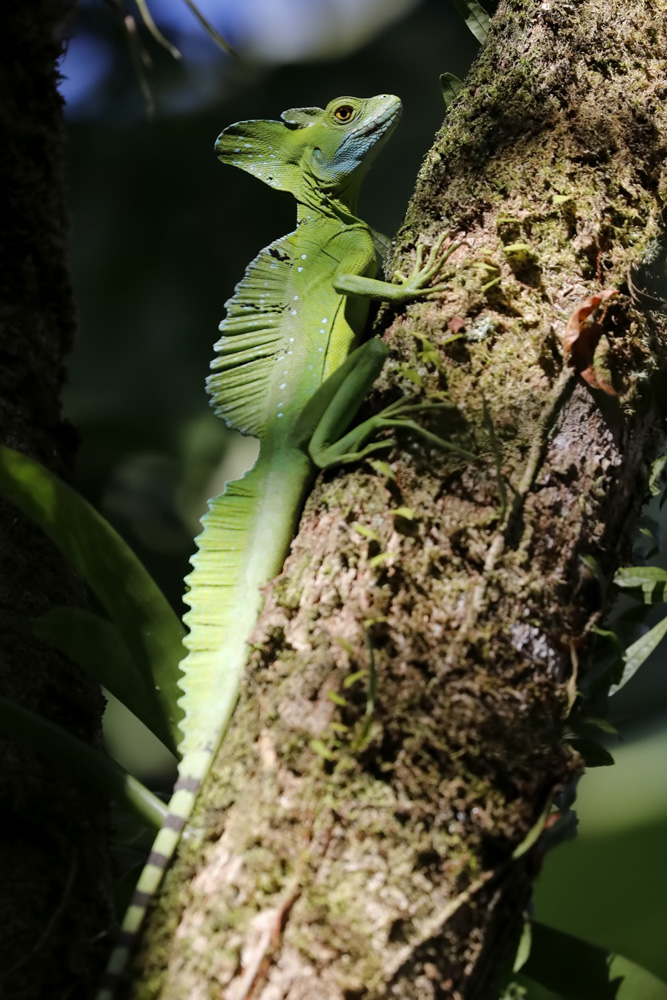
One of the things that makes our Costa Rica tours so popular is the reliability of seeing and photographing so many different species of birds, frogs, snakes, and bats. This is a very high-volume shooting tour and without fail, there will be one or two participants who simply don’t bring enough memory cards and portable hard drives to comfortably get through to the end of the trip. This is especially true with today’s high megapixel cameras and fast shooting speeds upwards of 20 frames per second. So, if you are reading this and considering joining the tour, be sure to heed this advice. Bring lots of high-capacity, high-speed memory cards AND portable backup drives to download your pictures onto each day.
This really becomes evident when you have subjects that are both predictable and repetitive as we had this year with a marvelous pair of red-lored parrots. Many, many frames were shot of these two birds this year.
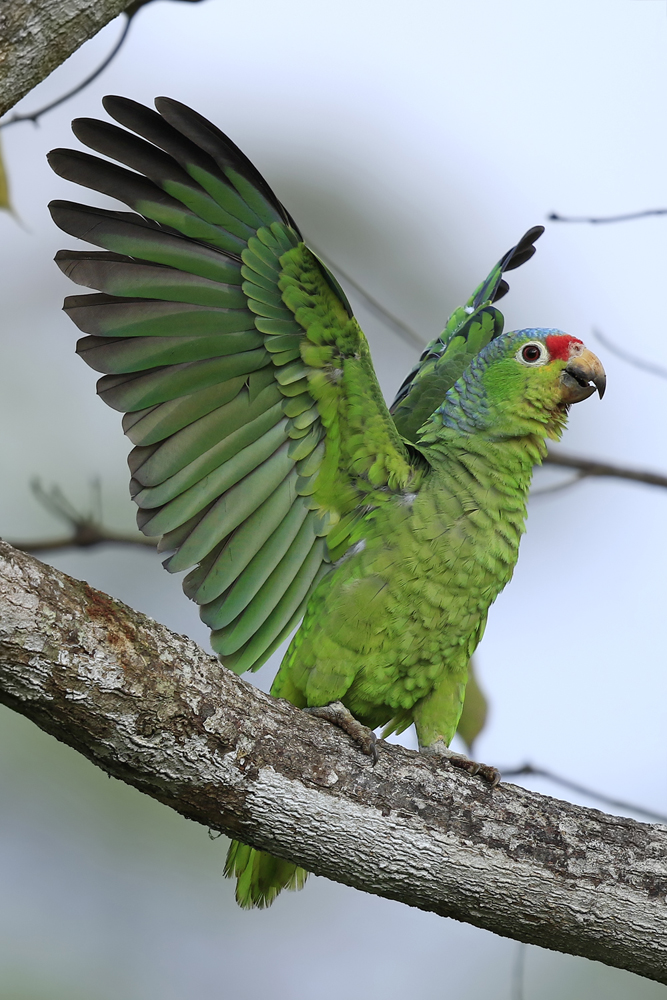
The red-lored parrot is a large green parrot that is found in the tropical lowlands. While we often see and hear them fly by in pairs (they’re quite noisy fliers), they seldom will land close enough for us to photograph. This year was different. On our first morning at our first lodge, we were all shooting birds from a deck located next to the breakfast area. The usual variety was in attendance. This included brown-hooded parrots, toucans, woodpeckers (one pair of black-cheeks were nesting just a few meters away), tanagers and honeycreepers. The occasional great curassow would wander by along with a scavenging coati. It was during breakfast when this noisy green duo first flew in and landed high in a tree by the deck. It wasn’t a great shot because the birds were nearly directly overhead, and the light wasn’t great. But I pointed them out to the group since I seldom even get to see them this close. After about 10 minutes, one of the birds flew. But instead of flying away, it flew to a dead palm tree trunk only a handful of meters away from us and landed on the hollowed out top. Shortly after, his mate flew in and landed on the top of this same tree trunk. They were only about 25 feet away. Although they were close, the picture wasn’t perfect. Our shooting deck was on the wrong side of the tree to take advantage of the early morning light. And the two birds never lined up perfectly to get them both in focus at the same time. I didn’t want to change positions for fear of scaring them away. As I watched them, one at a time each parrot would enter the hollow tree trunk from the top and go down and explore for several minutes. When the first one was through, the second bird did the same thing. They appeared to be scouting out a potential nest site. When both were done, they sat on top of the tree for a few minutes before noisily flying off and out of sight. They didn’t return the rest of the day. But their behavior was just too ’well-choreographed,’ for lack of a better word. This wasn’t the first time they had done this.
So, the next morning, we were all out on the deck early to photograph the usual subjects in the exquisite morning light. At around 6:30, I heard our parrots squawking as they approached the area. When they landed in a nearby tall tree, I grabbed my tripod and told the group to follow me. About half the group did while the other half relaxed with their morning coffee. This time, we went out onto the field to the OTHER side of the hollow palm tree and positioned ourselves to take full advantage of the morning light. After several minutes, the red-lored parrots flew in one at a time just like the morning before. Only this time, we had them lined up perfectly so both birds were in the same focal plane AND were being bathed in the warm morning sunlight. The shooting was non-stop. But it got even better. From our new perspective we could see a large crack in the trunk of the tree from the top down about the first 18 inches or so. The crack was a couple of inches wide and was basically a window into what they were doing. Just like clockwork, one of the pair slowly climbed down into the hole. Only this time we could follow his progress down in the ‘window’ while also having the birds in perfect light until it fully disappeared. Again, the shooting was non-stop. We got to photograph each parrot as it went down into the hole and while it climbed back out while the mate waited on top of the tree. It was beyond perfect. When they were done, the pair flew away just like the day before. Because we knew their routine, some were able to capture them flying in or out as well as the great activity on the tree itself.
We had one more morning at this lodge before heading to our next exciting location. Just before 7AM, the parrots noisily announced their arrival. This time, everyone in the group followed me out into the field. The parrots performed again almost as if their act was scripted. This time, EVERYONE got the pictures. It is the unexpected opportunities like this that will quickly fill your memory cards no matter how well you think you planned.
As we left that lodge, my hope was that those parrots would still be doing nest site reconnaissance in two weeks when I came back with the second group. They were!
As always – I can’t wait to get back there!
